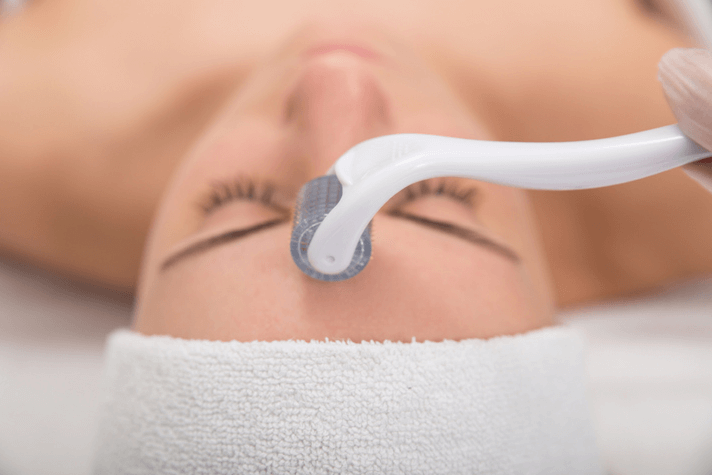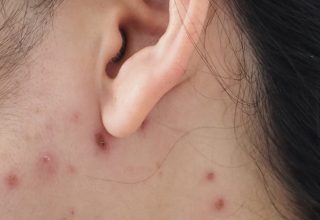Microneedling vs. RF Needling: Which Is Better To Make You Look Younger?
Ever imagine how amazing your skin would look if those fine lines and wrinkles could disappear? Aging like fine wine only happens to a lucky few, the rest are left with a search to capture their long-gone youthful glow. Fortunately, thanks to micro-needling, you can revitalize your skin without the risks of surgery or downtime to achieve that youthful, dewy-looking skin.
If you’ve been deciding between microneedling and RF (radiofrequency) needling, but aren’t sure which one is best for you, then this blog is here to help! Read on to learn everything you need to know about both procedures, and how they can help you achieve your beauty goals.
Contents
What is Microneedling?
Microneedling is a minimally invasive skincare treatment that uses super-thin needles to pierce the first layer of your skin, creating micro-wounds. This stimulates “wound healing,” which is when your skin heals itself by producing collagen and elastin. These are two proteins that are responsible for healthy youthful appearances.
Microneedling is done using a derma roller or a dermapen to treat surface texture and tone, fine lines, and mild surface scarring. Punctures from microneedling work to thicken the skin and reduce the appearance of wrinkles, acne scarring, stretch marks, and sun damage.
What is RF Microneedling?
RF Microneedling adds radiofrequency (RF) energy to the traditional microneedling procedure. These “energized” needles create micro-punctures along the skin that delivers radiofrequency energy through the entry points. The addition of radiofrequency in the deeper tissues of the skin gives the collagen an additional boost, which further enhances skin tightening and heals common skin conditions.
Radiofrequency microneedling uses a gentle stamping technique, which helps reduce any risks of microtears and gives greater accuracy.
Although traditional microneedling and RF microneedling are similar, the tools used are very different. RF needling can get stronger results for you with fewer treatments. Let’s find out how and why.
Traditional Microneedling vs. RF Microneedling

While microneedling affects the skin with physical injuries, RF microneedling uses heatwaves similar to laser treatments. Here are some of the other aspects that set RF microneedling and traditional microneedling differ:
1. RF Microneedling can be personalized
RF Microneedling can be personalized based on your unique skin and cosmetic concerns. RF energy is regulated based on the size and depth of treatment required, too. The depth of the needle used on your skin can be customized to provide greater results with more precision.
This adaptable procedure can also act as a substitute for ablative laser procedures.
2. RF Microneedling achieves results with fewer sessions
In traditional microneedling, only the top layers of the skin are treated. But with RF, the needles deliver radiofrequency energy that penetrates into the deeper layer of the skin. This heat tightens the skin more effectively with an additional boost to the production of collagen and elastin. As a result, fewer sessions are required for RF microneedling to achieve better results.
3. RF Microneedling requires no downtime
As traditional microneedling is more abrasive, your skin will appear red for a longer period of time after you’ve had this procedure. Your skin may also feel a bit rough or sensitive to the touch afterward.
On the other hand, there is no downtime with RF microneedling as it is a non-invasive procedure, which causes minimal discomfort.
4. RF Microneedling can address more skin problems
RF microneedling treatment can effectively combat more skin problems that traditional microneedling may not be able to treat. Though used mostly on the face, RF microneedling procedures can be used on almost any area of the body to reduce the appearance of scars and stretch marks. Extensive thicker scars create rough patches of damaged skin that only the energy from radiofrequency needles can treat.
Thus, RF microneedling brings better results to cosmetic concerns that traditional microneedling may find challenging.
5. A boost in collagen production
By controlling the intensity of the radiofrequency waves, your dermatologist can reach the deepest skin layers for more extensive treatment. This RF energy boosts the process of collagen production without harming your skin.
More collagen equals faster recovery time and greater benefits.
RF Microneedling is Effective in Treating:

- Acne scars
- Cellulite
- Crow’s feet
- Forehead fine lines, frown lines, and wrinkles
- Hair Loss and/or thinning Hair
- Injury or surgery Scars
- Large pores
- Neck Lines
- Saggy Skin
- Spider veins
- Stretch marks
- Sunburn or dark spots
- Underarm sweating (Hyperhidrosis)
- Uneven skin tone
Who Is RF Microneedling Not Recommended For?
RF microneedling is safe for all skin types, but it isn’t appropriate for everyone. Microneedling with radiofrequency is not advised for those who have used Accutane within six months, have had radiation treatment within the last year, have open wounds, or have a history of keloid scars.
Always speak to your skincare professional or dermatologist before undergoing any microneedling treatment.
Is RF Microneedling Painful?
Before the treatment begins, a numbing cream is applied to manage any discomfort or pain you might feel during the procedure. Throughout the procedure, the doctor uses a tool that contains tiny needles. Then, you might experience some pain on the “bonier” areas of your face, such as your jawline, forehead, and hairline. Pain in other areas of your body could be more tolerable than on the face. If you are afraid of needles, RF microneedling might be particularly uncomfortable.
To minimize the pain after your procedure, make sure to follow all post-operative instructions provided by your dermatologist. Also, apply the prescribed or recommended topical creams only.
How Long Does It Take To See Results?
After your initial RF microneedling procedure, you can expect to see changes in your skin within a week. The treatment works when the body notices inflammation. The body will then send growth factors to the affected area. With this, the production of both elastin and collagen will increase. Since it is a natural process, the skin takes time to fully rebuild and you will continue to see improvements over the next six months.
As your body rebuilds collagen to heal the new skin, the skin tightening effects will begin to appear. You will soon start to notice your skin getting brighter and smoother. Though one microneedling treatment can yield positive results, multiple follow-up appointments for RF microneedling may be necessary, depending on your needs and goals. A gap of one month is ideal between each appointment. But it can be longer depending on your specific skin concern.
How Long Does RF Microneedling Last?
As everyone’s skin is unique, the exact results of RF microneedling vary from one person to another. Individual results will last based on your age, skin type, the conditions you are treating, and the areas being treated. Treatments for scars, like atrophic acne scars, can have permanent results.
A proper skincare routine after the procedure, like applying sunscreen when you are outside, avoiding harsh chemicals on your face, refraining from popping new pimples, etc., may yield longer-lasting results. The treatment may not prove to be as effective if you have a job outdoors as it may result in exposure to direct sunlight or contact with cigarette smoke.
Depending on the areas treated, a treatment session may last between 20 and 30 minutes. However, the results may last from one to two years and are also conditional to the RF device used and the intensity of your treatments.
How Much Does RF Microneedling Cost?
The costs of RF Microneedling vary per patient’s customized treatment plan and factors like a skin condition, the practitioner, location, and more. For a professional treatment, you can expect an average of $200 to $700 per session. Since you will typically need around four to six sessions, the total expected cost can range between $600 and $4,200.
Speak to your local skincare professional to learn more about the differences between RF microneedling, traditional microneedling, and which procedure may be right for your specific skin concerns. Now, you’re only one step away from brighter, more youthful-looking skin!
Read Also:
- A Complete Skin Care Regimen Every Professional Will Love
- Top 10 Skin Care Tips for Beautiful Skin
- The Smoking Effect: Cigarettes are Making Your Skin Age Faster


